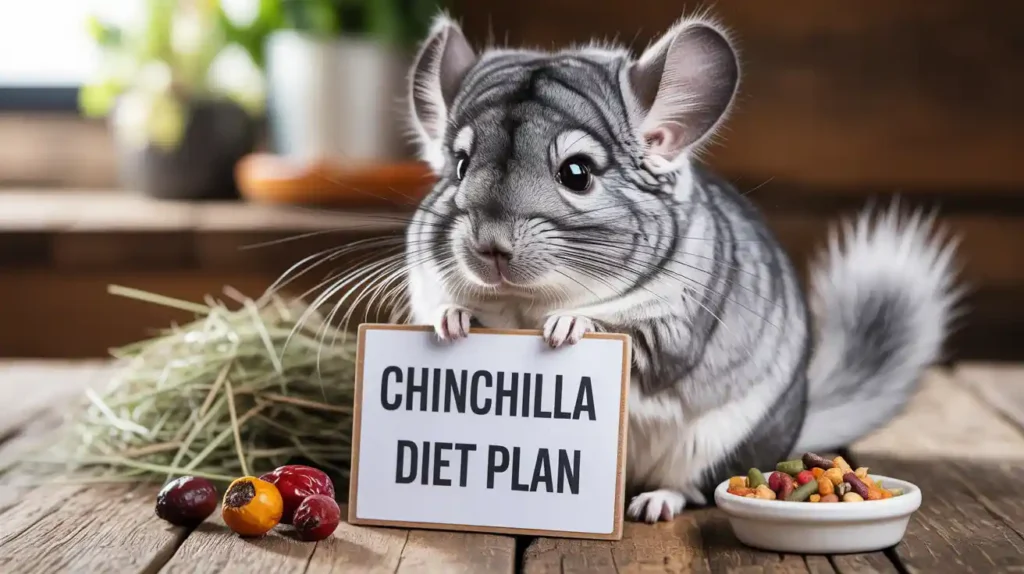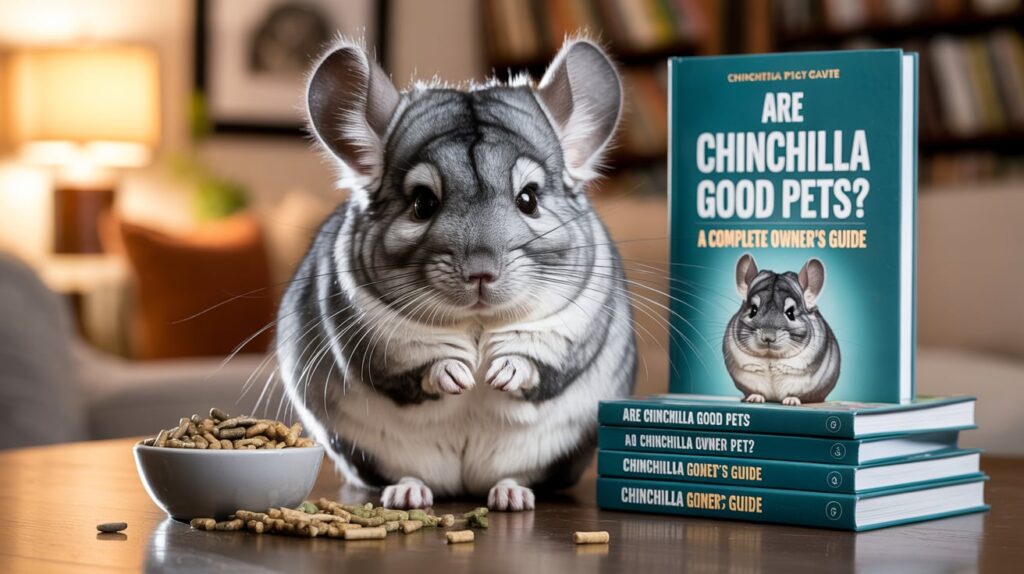Chinchillas are the one of species that are common for their adorable facts about living. Chinchilla are small and fluffy animals that many people find adorable. However, there are so many surprising facts about them that most people don’t know. In this article, you will learn fun, easy-to-understand information about chinchillas. Let’s explore what makes these animals so special.
Chinchillas also have special for their nutritious facts that they used to eat. And also their breeding time are special and specific. Female chinchillas are more active than male chinchillas.
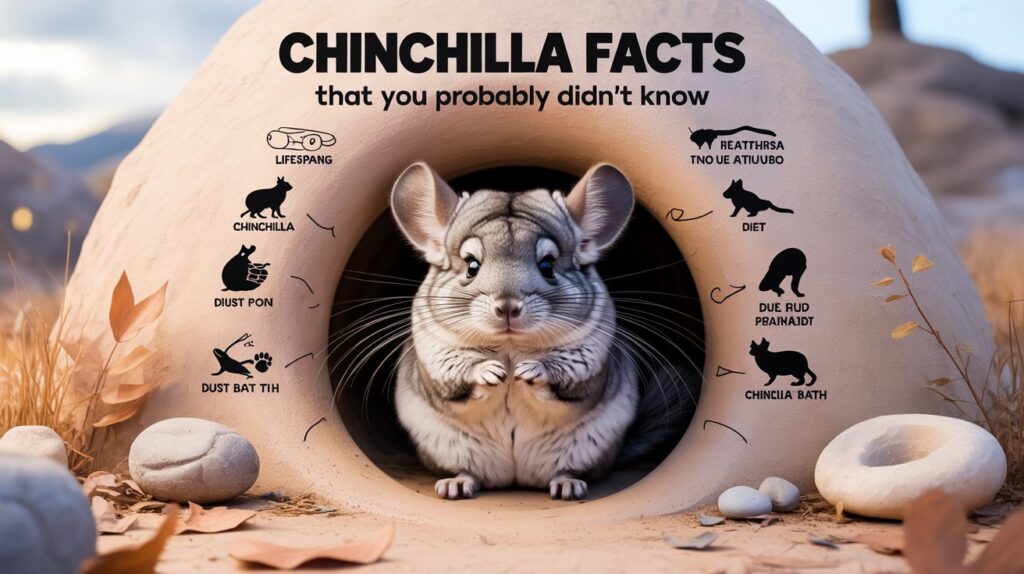
Table of Contents
1. Chinchilla Have the Densest Fur on Land
One of the most amazing facts is that chinchillas have the densest fur of all land animals. While humans may have only 100 to 200 hairs per square inch, chinchillas can have over 20,000 hairs in just one square inch. That’s why their fur feels so soft and thick.
Because their fur is so dense, chinchillas cannot get wet like other animals. Water gets trapped in their fur and can cause fungus or skin infections. Therefore, instead of water baths, chinchillas take dust baths. We will talk more about that later.
In addition, this soft fur helped them stay warm in their natural home the cold mountains of South America.
2. Chinchillas Come From the Andes Mountains
Chinchillas are not from North America or Europe. They are native to the Andes Mountains in South America, especially in countries like Chile, Peru, and Bolivia. These mountains are very high and cold. That’s why chinchillas needed thick fur to survive.
Because of hunting and habitat loss, wild chinchilla numbers dropped a lot. Today, they are considered an endangered species in the wild. Even so, they are now commonly kept as pets in many homes around the world.
Interestingly, chinchillas live in rocky places. They hide in small cracks to stay safe from predators. Their strong back legs help them climb and jump across rocks.
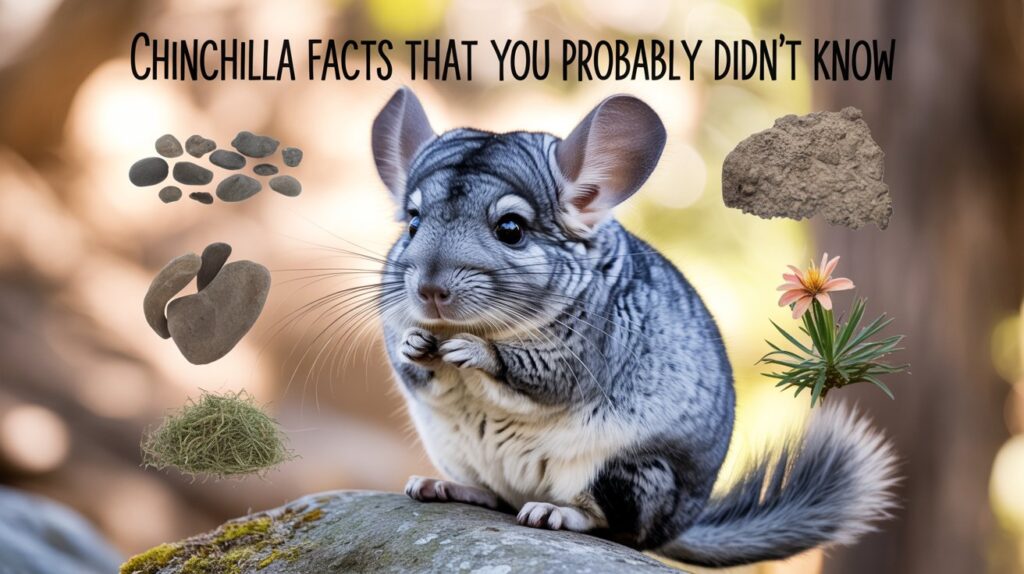
3. Chinchilla Take Dust Baths, Not Water Baths
As mentioned earlier, chinchillas do not take water baths. Instead, they roll around in fine volcanic dust to clean their fur. This dust removes oil and dirt from their thick coats.
In fact, water can be harmful to chinchillas. It can soak deep into their fur and take a long time to dry. This can lead to chilling, mold, and infections. That’s why owners give their chinchillas a dust bath 2–3 times a week.
These dust baths are fun to watch! Chinchillas jump, roll, and flip in the dust. It’s cute and keeps them healthy at the same time.
4. They Are Super Jumpers and Very Active
Even though chinchillas are small, they can jump very high. Some can leap up to 6 feet (about 1.8 meters) in the air! Their strong back legs help them do this. This is helpful in the wild when they need to escape from danger.
Because they are active animals, chinchillas need lots of space to play and run. In cages, they love to climb, jump, and explore. If you own a chinchilla, it’s a good idea to let them out in a safe area to get exercise.
They are also mostly nocturnal or crepuscular. That means they are awake at night or during sunrise and sunset. During the day, they usually sleep.
5. Chinchillas Have Unique Teeth and Long Lives
One surprising fact is that chinchillas’ teeth never stop growing! Like rabbits and guinea pigs, they must chew often to keep their teeth at the right size. Otherwise, their teeth can get too long and cause pain or problems with eating.
Because of this, chinchillas need chew toys, wooden sticks, or safe blocks to bite on every day.
Another cool fact is that chinchillas live much longer than many other small pets. While hamsters live 2–3 years and guinea pigs live 4–8 years, chinchillas can live 12 to 20 years! That means they are a long-term pet and need lifelong care and love.
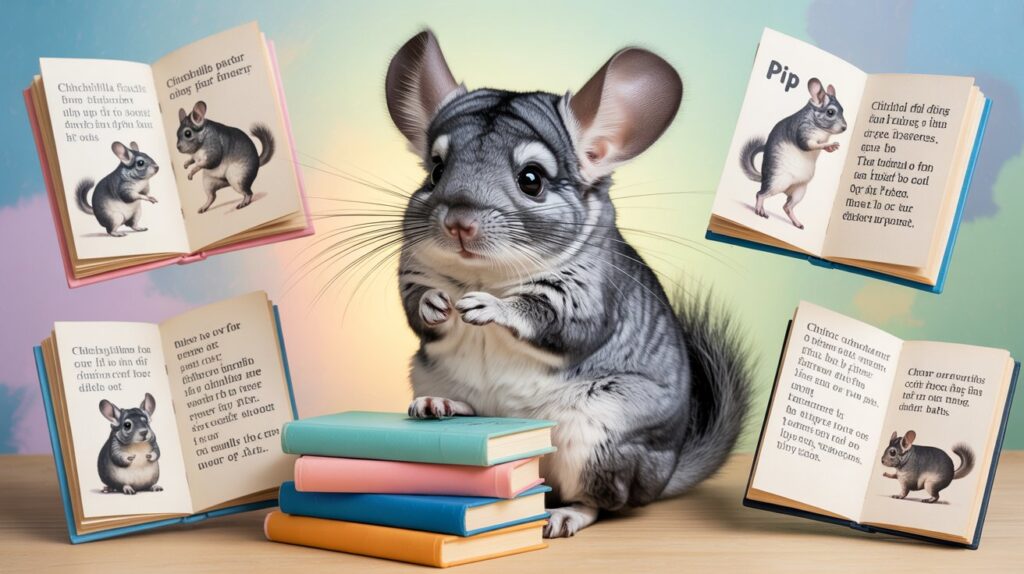
Conclusion
Chinchillas are amazing little animals with many secrets. From their thick fur and high jumps to their long lives and funny dust baths, they are full of surprises. Although they may look like simple pets, chinchillas have special needs and unique habits.
If you are thinking about getting a chinchilla, make sure you learn how to care for one properly. Give them space to jump, dust to bathe in, and safe toys to chew. In return, you will have a sweet and loving pet for many years.
FAQ
1. What do chinchillas eat?
Chinchillas mostly eat hay, chinchilla pellets, and fresh water. Sometimes, they can have small treats like dried apple or oats.
2. Can chinchillas get wet?
No, chinchillas should not get wet. Their fur is too thick, and water can cause skin problems.
3. Are chinchillas good pets?
Yes, chinchillas are quiet, clean, and fun. But they need gentle handling, exercise, and regular care.
4. Do chinchillas smell?
No, chinchillas are very clean animals and do not smell bad if their cage is kept tidy.
5. Can chinchillas bite?
Chinchillas may bite if they feel scared or hurt, but most are gentle when handled with care.
6. Are chinchillas noisy?
Chinchillas are mostly quiet, but they can make small sounds like chirps, squeaks, or barks when excited or scared.
7. Can children play with chinchillas?
Yes, but children should be supervised. Chinchillas are fragile and fast, so they need to be handled carefully.
8. How often do chinchillas need dust baths?
Chinchillas need a dust bath 2–3 times per week. It helps keep their fur clean and healthy.
9. Where do chinchillas sleep?
They sleep in caves or hiding spots in the wild. As pets, they like quiet, dark places inside their cage.
10. Can chinchillas live alone?
Chinchillas can live alone or in pairs. If paired, they must get along well. Males and females should be kept apart unless you want babies.
More Surprising Chinchilla Facts
- Here are some extra fun facts that might amaze you even more:
- Chinchillas can make over 100 different sounds to express emotions.
- They can do a defense trick called “fur slip,” where they let go of some fur to escape danger.
- Their hearts beat very fast — between 200 and 300 times per minute.
- Chinchillas rarely get fleas or ticks because their fur is too dense.
- Baby chinchillas are called kits and are born with fur and open eyes.
- Some chinchillas have rare fur colors like violet, ebony, or mosaic.

